Aerosoft Zagreb Airport Instructions Manual
- Typ
- Instructions Manual

DLC
Manual
AGREB
AEROSOFT
Z
AIRPORT

AEROSOFT AIRPORT Zagreb
Aerosoft GmbH 2021
2 3
Developed by: Dražen Matlekovic
Manual: Dražen Matlekovic, Aerosoft GmbH
Handbuch
Manual
AEROSOFT AIRPORT
Zagreb
Copyright: © 2021 / Aerosoft GmbH
Airport Paderborn/Lippstadt
D-33142 Büren, Germany
Tel: +49 (0) 29 55 7603-10
Fax: +49 (0) 29 55 7603-33
Internet: www.aerosoft.com
All trademarks and brand names are trademarks or registered
trademarks of their respective owners. All rights reserved. /
Alle
Warenzeichen und Markennamen sind Warenzeichen oder eingetragene
Warenzeichen ihrer jeweiligen Eigentümer.
Alle Urheber- und Leistungs-
schutzrechte vorbehalten
.
Erweiterung für
Add-on for
Microsoft Flight Simulator

AEROSOFT AIRPORT Zagreb
Aerosoft GmbH 2021
4 5
Inhalt
Zu Beginn ...................................................................6
Systemanforderungen ........................................................... 6
Support ................................................................................. 6
Urheberrechte ....................................................................... 7
Danksagung .......................................................................... 7
Der Flughafen ...........................................................8
Technische Angaben ............................................................ 11
Radiofrequenzen ...................................................... 11
Bemerkungen ..........................................................12
Charts ................................................................................. 13
Contents
Starting Off .............................................................22
System Requirements........................................................... 22
Support ............................................................................... 22
Copyrights ........................................................................... 23
Acknowledgments ............................................................... 23
The Airport ..............................................................24
Technical Information .......................................................... 26
Radio Frequencies ................................................... 26
Remarks ...................................................................27
Charts ...................................................................... 28

AEROSOFT AIRPORT Zagreb
Aerosoft GmbH 2021
6 7
Deutsch
Support ist uns sehr wichtig. Der Kauf eines unserer Produkte gibt
Ihnen das Recht, uns mit Fragen zu löchern, die Sie vielleicht dumm
finden. Sie sind es nicht. Wir bieten Support auf Deutsch, Englisch,
Niederländisch, Französisch, Spanisch und Portugiesisch.
Urheberrechte
Die Software, das Handbuch und sonstiges zugehöriges Material sind
durch Urheberrechtsgesetze geschützt. Die Software wird lizenziert,
nicht verkauft. Sie dürfen eine Kopie der Software auf einem Compu-
ter für Ihre persönliche, nichtkommerzielle Nutzung installieren und
ausführen. Die Software, das Handbuch und alle anderen zugehö-
rigen Materialien dürfen ohne vorherige schriftliche Erlaubnis der
Entwickler der Software und der Aerosoft GmbH weder kopiert,
fotokopiert, übersetzt, zurückentwickelt, dekompiliert, disassembliert
oder in anderer Form für elektronische Maschinen lesbar gemacht
werden.
Danksagung
Der Entwickler dankt dem Zagreb International Airport für die gute
Zusammenarbeit und Unterstützung.
Ebenso gilt ein Dank an die Croatia Crontrol Ltd. für die Beratung der
Einbindung der Charts und Diagramme in diesem Handbuch.
Vielen Dank auch an:
1. János Römer (who wrote a manual)
2. Alan Grubelic (photographed a couple of important pictures)
3. Arno Gerretsen (ModelConverterX)
Zu Beginn
Systemanforderungen
Um die Szenerie „Aerosoft Airport Zagreb“ möglichst störungsfrei
anfliegen zu können, benötigen Sie:
• Microsoft Flight Simulator (Version 2020)
• Betriebssystem: Windows 10 (Nov 2019 Update - 1909)
• DirectX: DirectX 11
• Prozessor: Intel i5-4460 -oder- Ryzen 3 1200 oder besser
• Grafik: NVIDIA GTX 770 -oder- Radeon RX 570 oder besser
• Videospeicher: 2 GB
• Arbeitsspeicher: 8 GB
• Festplattenspeicher: 5 GB
• Bandbreite: 5 Mbp
Support
Support für dieses Produkt wird von Aerosoft bereitgestellt. Wir
bevorzugen ein Supportforum, da es schnell und effizient ist, weil
Kunden sich gegenseitig helfen können, wenn wir nicht im Büro sind:
Support-Forum:
http://forum.aerosoft.com/
Wenn Sie E-Mail-Support bevorzugen:
https://helpdesk.aerosoft.com/portal/newticket
Bitte beachten Sie, dass E-Mail-Support langsam sein kann, wenn wir
stark beschäftigt sind (zum Beispiel kurz nach einem Release). Wie
versuchen, binnen 24 Stunden auf Sie zurückzukommen, aber wenn
Sie eine schnelle Antwort möchten, empfehlen wir das Forum.

AEROSOFT AIRPORT Zagreb
Aerosoft GmbH 2021
8 9
Deutsch
Der Flughafen
Zagreb ist die Hauptstadt der Republik Kroatien und befindet sich am
Fuße des Medvednica Gebirgszuges am Ufer der Save. Bewohnt wird
die Stadt von circa 800.000 Menschen. Der erste Flugplatz war Penka-
lino uzletište (Penkalas Landebahn) und Teil des militärischen Truppen-
übungsplatzes in Crnomerec. Kurz nach dem berühmten Flug der
Gebrüder Wright wurde er zunächst vom kroatischen Erfinder
Slavoljub Penkala für Tests seines Doppeldeckers genutzt. Bis ins Jahr
1929 folgten anschließend Passagier- und Militärflügen aus Crnome-
rec. 1926 wurde in Zagreb ein zweiter Flugplatz am östlichen Ende
der Stadt in Borongaj gebaut, welcher offiziell Aerodrom Zagreb
genannt wurde. Die erste reguläre Passagierlinie wurde 1929 in
Betrieb genommen (Belgrad - Zagreb). Ein Jahr später kam die erste
Gesellschaft aus dem Ausland hinzu - die tschechische CSA (Prag -
Zagreb).
Der Flughafen Franjo Tuđman Zagreb, Kroatiens wichtigster internatio-
naler Flughafen, befindet sich zehn Kilometer südöstlich von Kroatiens
Hauptstadt Zagreb. Seine Geschichte ist mit drei kleineren Militärflug-
plätzen verbunden. Vor dem Zweiten Weltkrieg richtete das König-
reich Jugoslawien in Kurilovec eine Graspiste ein. Im Jahr 1943
verband die deutsche Armee die 1100 Meter lange Piste mit einer
1800 Meter langen Betonpiste, die in der Nähe von Pleso gebaut
wurde. Etwa zur selben Zeit wurde nahe Lucko, südwestlich von
Zagreb, eine 1500 Meter lange Graspiste angelegt. An dieser Stelle
entstand von 1947 bis 1960 der Aerodrom Zagreb. Mit regelmäßigen
Passagierlinien von Lucko aus war Zagreb mit dem ganzen Land, aber
auch mit Zürich, München, Frankfurt, London und Kairo verbunden.
Mit größeren Flugzeugen, die eine Betonpiste erforderten, verlagerte
sich ein Teil des Passagierverkehrs auf den Militärflugplatz in Pleso. Im
Jahr 1961 wurde dort Zrakoplovna luka Zagreb (der Zagreber
Flughafen) gegründet. Aerodrom Lucko ist bis heute mit allgemeinem
und unregelmäßigem Verkehr aktiv (nicht Teil dieser Szenerie).
Mit dem Passagier- und Militärverkehr entwickelte sich in den
folgenden Jahrzehnten der Zrakoplovna luka Zagreb (der Zagreber
Flughafen; 1966 in Aerodrom Zagreb umbenannt). Aufgrund des
stetigen Wachstums des Passagier- und Frachtverkehrs wurden die
Manöverflächen erweitert, ein neues Terminalgebäude errichtet und
die Navigationsausrüstung verbessert. Mit rund 35.000 Abflügen und
Landungen im Jahr 1976, war er der verkehrsreichste Flughafen in
Südosteuropa.
Aufgrund des Krieges nach der Unabhängigkeit Kroatiens war der
Flughafen von August 1991 bis April 1992 vollständig außer Betrieb.
In der zweiten Hälfte des Jahrzehnts wurde der Flughafen in Zracna
luka Zagreb (Flughafen Zagreb) umbenannt und verbesserte langsam
seine Verkehrszahlen, die 2008 auf 2.000.000 Passagiere stiegen und
weiterwachsen. Im selben Jahr gewann die Arbeit der Architekten
Velimir Neidhardt und Branko Kincl den Wettbewerb für das neue
Passagierterminal. Im Jahr 2012 unterzeichnete die kroatische
Regierung einen Vertrag mit dem internationalen Konsortium MZLZ
(Medunarodna zracna luka Zagreb d.d.). Im darauffolgenden Jahr
übernahm das MZLZ den gesamten Flughafenbetrieb und der Bau des
neuen Passagierterminals begann. Nach der Entscheidung der
kroatischen Regierung im Jahr 2016 wurde der Flughafen in Franjo
Tudman, nach dem ersten kroatischen Präsidenten, umbenannt. Im
Rahmen des Vertrages und als erste Etappe der Entwicklung des
Flughafens wurde am 28. März 2017 das neue Passagierterminal mit
einer Fläche von 65.000 m² und einer Kapazität von 5.000.000
Passagieren, 30 Check-in-Schaltern und 8 Fluggastbrücken in Betrieb
genommen. Neben dem Vorfeld am neuen Passagierterminal wird
auch das Vorfeld am alten Terminal häufig genutzt; der gesamte
Passagier- und Flugzeugverkehr läuft allerdings über das neue
Terminal.
JAHR PAX
1947 11.016
1955 21.723
1960 49.173
1965 172.712
1970 640.168
1975 1.484.964
1980 1.599.531
1985 1.558.864

AEROSOFT AIRPORT Zagreb
Aerosoft GmbH 2021
10 11
Deutsch
1990 1.629.998
1992 303.622
1995 902.925
2000 1.149.830
2005 1.551.519
2010 2.071.651
2015 2.587.798
2017 3.092.047
2018 3.336.310
2019 3.435.531
Sehen Sie hier für weitere Statistiken:
http://zlz-zagreb-airport.hr/hr/statistika
Technische Angaben
Name: FRANJO TUĐMAN ZAGREB AIRPORT
ICAO: LDZA
IATA: ZAG
Region: Zagreb FIR (LDZO)
Koordinaten: 454434.55N
0160407.60E
Höhe über MSL: 353 ft
MAG VAR: 40E (2019)
0.10 increasing
Transition
Altitude (TA): 9500 ft
Types of Traffic: IFR/VFR
Runways
04 3252x45m 046° CONCRETE ILS 109.5 MHz IZA
22 3252x45m 226° CONCRETE ILS 109.1 MHz IZG
Radiofrequenzen
APP 120.700 MHz
TWR 118.300 MHz
GND 121.850 MHz
ATIS 124.575 MHz

AEROSOFT AIRPORT Zagreb
Aerosoft GmbH 2021
12 13
Deutsch
Bemerkungen
Von November bis April werden Schneeräumungsinformationen von
SNOWTAM und ATIS bekannt gegeben.
Nutzung des Teils von TWY F (von TWY C bis TWY B) verboten für
ACFT mit einer Spannweite von mehr als 61 m.
TWY D verboten für Luftfahrzeuge mit dem Kennbuchstaben D, E
und F; Luftfahrzeuge mit dem Kennbuchstaben C mit einem Radstand
von mehr als 18 m.
TWY T nur für militärische Flüge (militärische Genehmigung erforder-
lich).
RWY 23 Wendeplatzbeschränkungen: 180O-Drehung auf dem
Wendeplatz für Flugzeuge mit Radstand über 25,6 m ist nicht
möglich.
FLUGHAFENDATEN UND -CHARTS NUR FÜR FLUGSIMULATION!
SEHEN SIE HIER FÜR DETAILLIERTE CHARTS
http://www.crocontrol.hr/UserDocsImages/AIS%20produkti/eAIP/start.
html
SEHEN SIE HIER FÜR UPDATES
http://www.crocontrol.hr/default.aspx?id=58
Enthaltene Daten und Charts stimmen mit dem visuellen Szenerie-
Status 2020 überein. Weitere Updates werden erwartet.
Charts

AEROSOFT AIRPORT Zagreb
Aerosoft GmbH 2021
14 15
Deutsch

AEROSOFT AIRPORT Zagreb
Aerosoft GmbH 2021
16 17
Deutsch

AEROSOFT AIRPORT Zagreb
Aerosoft GmbH 2021
18 19
Deutsch

AEROSOFT AIRPORT Zagreb
Aerosoft GmbH 2021
20 21
Deutsch

AEROSOFT AIRPORT Zagreb
Aerosoft GmbH 2021
22 23
English
Starting Off
Thank you for buying and installing this scenery of Croatia’s main
airport and its surroundings into your flight simulator. It was develo-
ped with the support of the administration and personnel of the
airport, and an effort was made to build in as many faithful details, all
the while keeping the scenery optimised for modern computer
systems. We hope you will enjoy using the scenery as much as we did
making it. Apart from the optimisation for specific simulation
platforms, we intend to follow the progress of the airport itself with
updates.
System Requirements
In order for the scenery “Aerosoft Airport Zagreb” to run as smoothly
as possible, you need the following:
• Microsoft Flight Simulator (Version 2020)
• OS: Windows 10 (Nov 2019 Update - 1909)
• DirectX: DirectX 11
• CPU: Intel i5-4460 -or- Ryzen 3 1200 or better
• GPU: NVIDIA GTX 770 -or- Radeon RX 570 or better
• VRAM: 2 GB
• RAM: 8 GB
• HDD: 5 GB
Support
Support for this product is offered by Aerosoft. We prefer to have a
support forum for the simple reason that it is fast and efficient
because customers help customers when we are not in the office:
http://forum.aerosoft.com/
And we advise the Scenery section in the Microsoft Flight Simulator
subforum for any questions on this product. This should be your first
stop for any support. If you prefer support by email please do accept
that this could take a bit longer as it might be sent from person to
person if necessary, and that email support during the weekends is
always slow:
https://helpdesk.aerosoft.com/portal/home
We feel strongly about support. Buying one of our products gives you
the right to waste our time with questions you feel might be silly.
They are not.
Copyrights
This software, the manual, documentation, video images, and all the
related materials are protected by copyright laws. The software is
licensed, not sold. You may install and run one copy of the software
on one computer for your personal, non-commercial use. The
software, the manual and all related materials must not be copied,
photocopied, translated, reverse engineered, decompiled or reduced
to any electronic medium or machine legible form, neither completely
nor in part, without the previous written permission of the developers
of this software and Aerosoft GmbH.
Acknowledgments
The scenery author thanks the Zagreb International Airport for its
kindly assistance and support.
Also thanks to Croatia Control Ltd for consultation about including
charts and maps into this manual.
Also thanks to supporters
1. János Römer (who wrote a manual)
2. Alan Grubeliđ (photographed a couple of important pictures)
3. Arno Gerretsen (ModelConverterX)

AEROSOFT AIRPORT Zagreb
Aerosoft GmbH 2021
24 25
English
The Airport
Zagreb is the capital of the Republic of Croatia, located at the foot of
the mountain Medvednica and on the shores of the river Sava,
inhabited by ca 800,000 people. Its first aerodrome was Penkalino
uzletište (Penkala’s Runway), which was part of the military training
area in Crnomerec. Shortly after the famous Wright brothers’ flight, it
was first used by Croatian inventor Slavoljub Penkala for testing his
biplane, followed by passenger and military flights from Crnomerec
until 1929. In 1926, Zagreb got its second aerodrome at the east end,
built in Borongaj and officially dubbed Aerodrom Zagreb (the Zagreb
Aerodrome). The first regular passenger line began operation in 1929
(Belgrade – Zagreb). A year later, the first company from abroad
arrived – the Czech CSA (Prague – Zagreb).
The Franjo Tudman Zagreb Airport, Croatia’s main international airport,
is located ten kilometres southeast of Croatia’s capital Zagreb. Its history
is tied to three smaller military aerodromes. Before World War Two, the
Kingdom of Yugoslavia set up a grass runway in Kurilovec. In 1943 the
German army connected the 1100-metre long runway with an
1800-metre concrete runway built near Pleso. Around the same time,
near Lucko, southwest of Zagreb, a 1500-metre grass runway was set
up. It was at this location that Aerodrom Zagreb developed from 1947
to 1960. With regular passenger lines from Lucko, Zagreb was
connected to the entire country, as well as Zürich, Munich, Frankfurt,
London and Cairo. With bigger aircraft that demanded a concrete
runway, a part of passenger traffic shifted to the military aerodrome in
Pleso. In 1961 Zrakoplovna luka Zagreb (the Zagreb Airport) was
founded there. Aerodrom Lucko remains active to this day, with general
purpose and irregular traffic (not part of the scenery).
With passenger and military traffic, the following decades saw the
development of Zrakoplovna luka Zagreb (the Zagreb Airport;
renamed to Aerodrom Zagreb in 1966). Because of constant growth
of passenger and cargo traffic, the manoeuvring areas were expan-
ded, a new terminal building was constructed and the navigation
equipment was improved. With roughly 35,000 take-offs and
landings in 1976, it was the airport with the most traffic in Southeast
Europe.
Due to the war following Croatia’s independence, the airport was
completely out of function from August 1991 to April 1992. In the
second half of the decade, the airport is renamed to Zracna luka
Zagreb (the Zagreb Airport) and slowly improved its traffic figures,
rising to 2,000,000 passengers in 2008 and growing. In the same
year, the work of architects Velimir Neidhardt and Branko Kincl won
the competition for the new passenger terminal. In 2012, the
Croatian Government signed the contract with the MZLZ international
consortium (Medunarodna zracna luka Zagreb d.d.). In the following
year, the MZLZ took over all airport operations, and the construction
of the new passenger terminal began. By the decision of the Croatian
Government in 2016, the airport was dubbed Franjo Tudman, after
the first Croatian president. As part of the contract and the first stage
of the development of the airport, the new passenger terminal began
operation on the 28th of March 2017, covering 65,000 m2, with a
capacity of 5,000,000 passengers, 30 check-in counters and 8
jetways. Besides the apron by the new passenger terminal, the one by
the old terminal is also frequently in use; however, all passenger and
aircraft traffic goes through the new terminal.
YEAR PAX
1947 11.016
1955 21.723
1960 49.173
1965 172.712
1970 640.168
1975 1.484.964
1980 1.599.531
1985 1.558.864
1990 1.629.998
1992 303.622
1995 902.925
2000 1.149.830
2005 1.551.519
2010 2.071.651

AEROSOFT AIRPORT Zagreb
Aerosoft GmbH 2021
26 27
English
2015 2.587.798
2017 3.092.047
2018 3.336.310
2019 3.435.531
Technical Information
Name: FRANJO TUĐMAN ZAGREB AIRPORT
ICAO: LDZA
IATA: ZAG
Region: Zagreb FIR (LDZO)
Coordinates: 454434.55N
0160407.60E
Elevation AMSL: 353 ft
MAG VAR: 40E (2019)
0.10 increasing
Transition
Altitude (TA): 9500 ft
Types of Traffic: IFR/VFR
Runways
04 3252x45m 046° CONCRETE ILS 109.5 MHz IZA
22 3252x45m 226° CONCRETE ILS 109.1 MHz IZG
Radio Frequencies
APP 120.700 MHz
TWR 118.300 MHz
GND 121.850 MHz
ATIS 124.575 MHz
Remarks
Snow clearance information promulgated by SNOWTAM and ATIS
from November to April.
Use of part od TWY F (from TWY C to TWY B) prohibited to ACFT
with wing span more than 61 m.
TWY D prohibited to aircraft code letter D, E and F; aircraft code letter
C with wheel base more than 18 m.
TWY T only for military flights (military authorization required).
RWY 23 turn pad restrictions: 180O turn on turn pad for aircraft with
wheel base more than 25.6 m is not possible.
AIRPORT DATA AND CHARTS FOR FLIGHT SIMULATION ONLY!
FOR DETAILED CHARTS CHECK
http://www.crocontrol.hr/UserDocsImages/AIS%20produkti/eAIP/start.
html
FOR UPDATES CHECK
http://www.crocontrol.hr/default.aspx?id=58
Included data and charts correspond with the visual scenery status
locked to 2020. Further updates are expected.
See more statistics:
http://zlz-zagreb-airport.hr/hr/
statistika

AEROSOFT AIRPORT Zagreb
Aerosoft GmbH 2021
28 29
English
Charts

AEROSOFT AIRPORT Zagreb
Aerosoft GmbH 2021
30 31
English

AEROSOFT AIRPORT Zagreb
Aerosoft GmbH 2021
32 33
English

AEROSOFT AIRPORT Zagreb
Aerosoft GmbH 2021
34 35
English

AEROSOFT AIRPORT Zagreb
Aerosoft GmbH 2021
36 37
English
FLIGHT SIMULATOR
A GUIDE TO
-
 1
1
-
 2
2
-
 3
3
-
 4
4
-
 5
5
-
 6
6
-
 7
7
-
 8
8
-
 9
9
-
 10
10
-
 11
11
-
 12
12
-
 13
13
-
 14
14
-
 15
15
-
 16
16
-
 17
17
-
 18
18
-
 19
19
Aerosoft Zagreb Airport Instructions Manual
- Typ
- Instructions Manual
in anderen Sprachen
- English: Aerosoft Zagreb Airport
Verwandte Artikel
-
 Sim-Wings Brno Benutzerhandbuch
Sim-Wings Brno Benutzerhandbuch
-
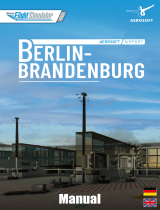 Sim-Wings Berlin Brandenburg Airport Instructions Manual
Sim-Wings Berlin Brandenburg Airport Instructions Manual
-
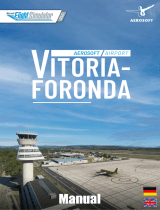 Sim-Wings Vitoria-Foronda Airport Instructions Manual
Sim-Wings Vitoria-Foronda Airport Instructions Manual
-
 Sim-Wings Köln Bonn Professional Benutzerhandbuch
Sim-Wings Köln Bonn Professional Benutzerhandbuch
-
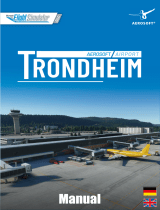 Sim-Wings Trondheim Airport Benutzerhandbuch
Sim-Wings Trondheim Airport Benutzerhandbuch
-
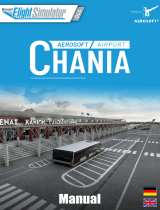 Sim-Wings Chania International Airport Benutzerhandbuch
Sim-Wings Chania International Airport Benutzerhandbuch
-
 Sim-Wings Approaching Innsbruck 2 Benutzerhandbuch
Sim-Wings Approaching Innsbruck 2 Benutzerhandbuch
-
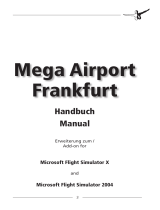 Sim-Wings Mega Airport Frankfurt Flight Simulator 2004 Flight Simulator X Benutzerhandbuch
Sim-Wings Mega Airport Frankfurt Flight Simulator 2004 Flight Simulator X Benutzerhandbuch
-
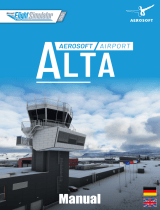 Sim-Wings Alta Airport Benutzerhandbuch
Sim-Wings Alta Airport Benutzerhandbuch
-
 Sim-Wings Cologne Bonn Airport Benutzerhandbuch
Sim-Wings Cologne Bonn Airport Benutzerhandbuch




























